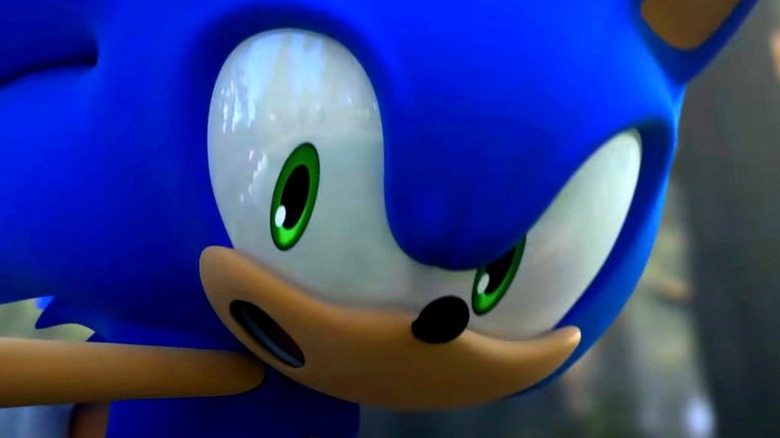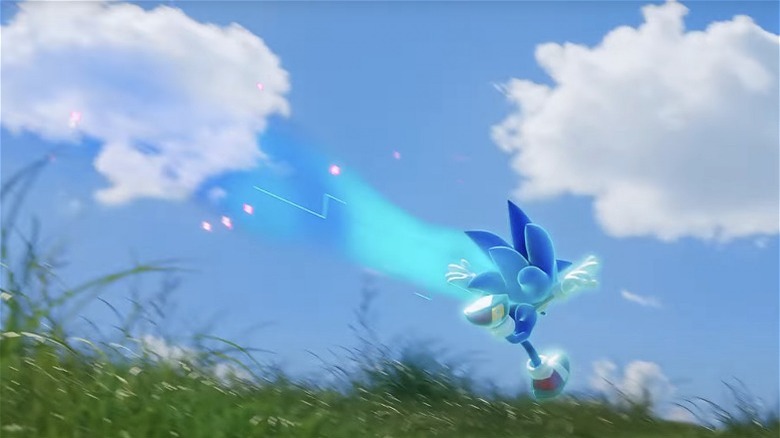Sonic The Hedgehog's Modern Design Didn't Come From A Video Game
From his spiky blue hair to his red running shoes, Sonic from "Sonic the Hedgehog" has never strayed too far from the design fundamentals that made him character popular in the first place, though he has undergone small cosmetic changes over the years. His modern incarnation makes its return in the divisive "Sonic Frontiers," an open-world adventure arriving later this year. But what gamers may not know: that design originated outside of Sega and outside of the gaming industry itself, making for quite the contrast from the origins of Sonic's first design.
Sonic's designers in the 16-bit era, Hirokazu Yasuhara and Naoto Ohshima, gave an extensive presentation at the 2018 Game Developers Conference, where they discussed how the original character design came about from a trip to New York. The designers polled Central Square passersby on several character ideas, and the idea for a hedgehog character received the most praise. Thus, Sega had its marketable character to base a design off of, one it continues to use in remasters of classic games, like the recently released "Sonic Origins."
However, the Sonic design gamers know from "Sonic Adventure" and later games stemmed from, of all places, a Macy's Thanksgiving Day Parade.
Floating around at the speed of sound
Polygon recapped Sonic's debut at the 1993 Macy's Thanksgiving Day Parade, which was the first time a video game character showed up at the famous event. It meant a landmark achievement for Sega as well as a landmark disaster when the company's float went rogue and injured two parade-goers. However, the blue blur accomplished another feat that day: premiering his new design.
Before the event, Sega gave design guidelines for its flagship mascot to the studio producing the floats for the parade. The studio cycled through several designs before choosing one that balanced "a little amount of sass" with "approachability," according to Ellen Beth Van Buskirk Knapp, former Sega of America marketing services manager. "You needed to please the client — and ultimately, Sega was the client, because we paid for a lot of it," Knapp said.
Brenda Lynch, former head of the Sonic account for Manning, Selvage & Lee, gave some additional insights on the sleeker design for the Sonic float compared to the hedgehog's original design. "The key was that Sonic was the fastest video game character of the time," Lynch said. "There were many discussions and designs to ensure the balloon reflected Sonic's iconic need for speed."
Parade accidents aside, the design stuck. Sonic's main appeal has always boiled down to his speed, so it proved logical Sega would embrace a design synonymous with that trait.


